Macerating or marinating fruit in vinegar is a very old way of preserving fresh, perishable fruit. This simple white balsamic infused with the flavor of mulberries is easy to make, and probably one of the best white mulberry recipes I know of besides jam as the berries are often lacking in flavor. Read on and I'll explain what you need to know.
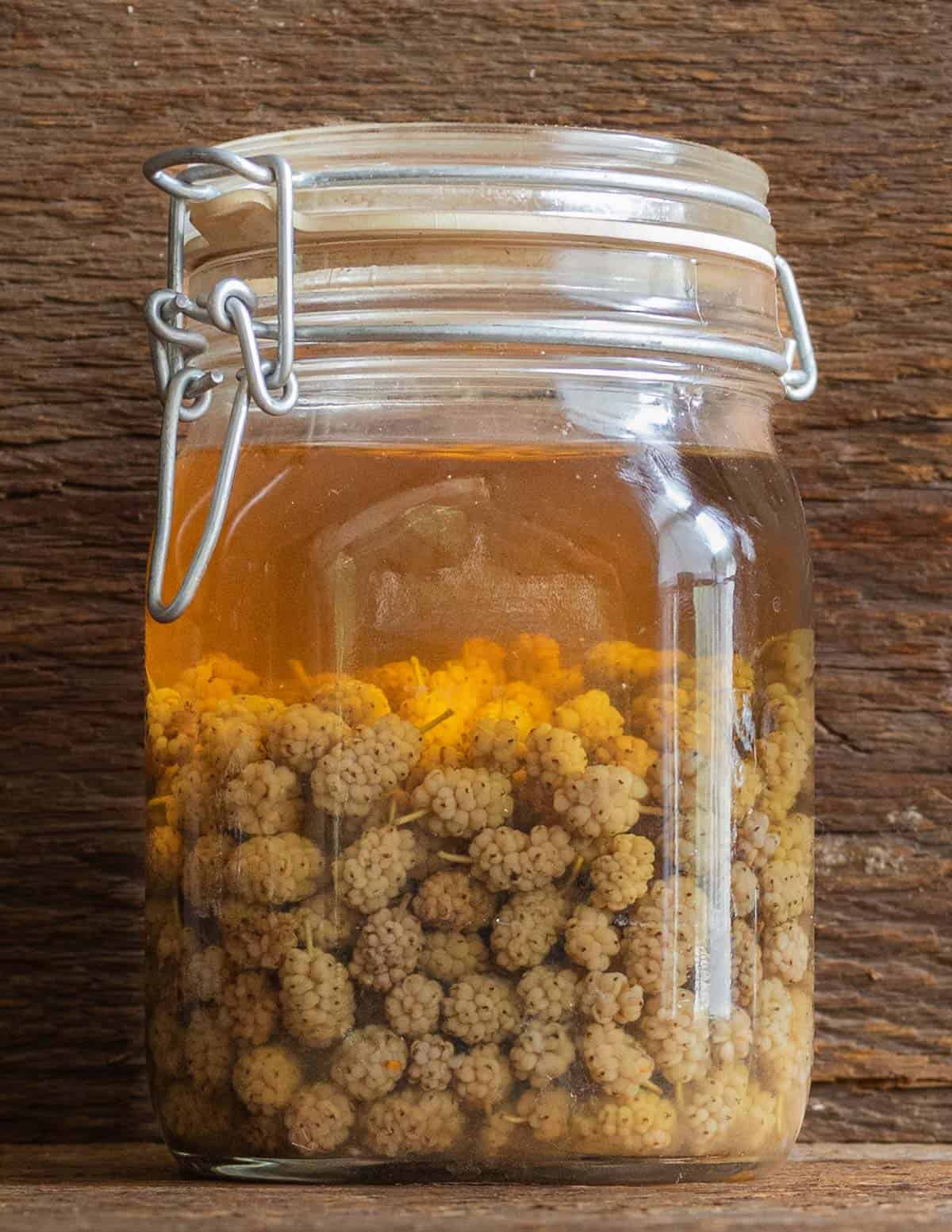
White, unpigmented mulberries aren't often the best tasting mulberry tree in my experience, and the flavor can vary wildly from tree to tree. But, the fruit is widely available, easy to identify and a lot of fun to harvest if you're a forager.
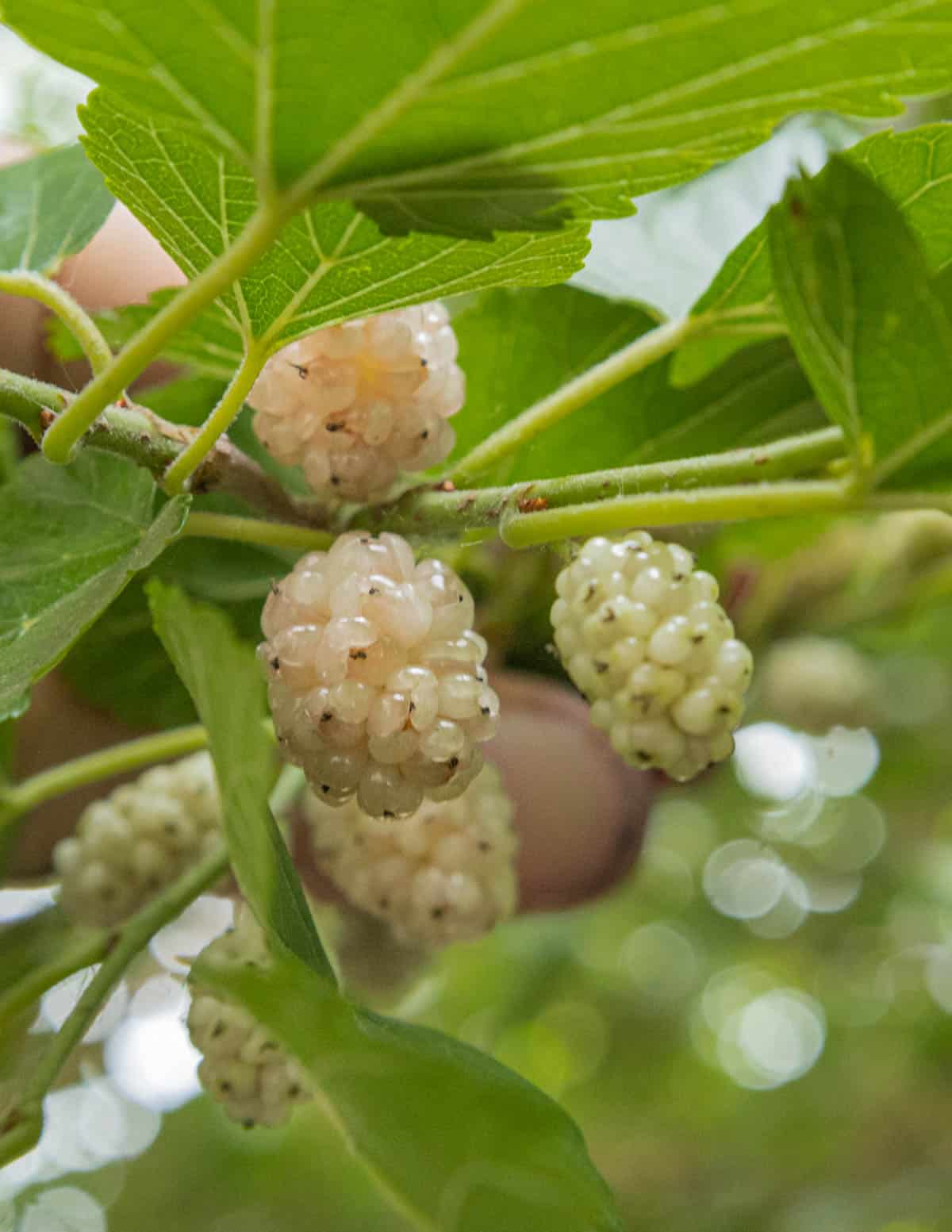
That said, there's a number of types of white mulberry trees that I haven't tasted yet that are said to be better, specifically white Pakistani mulberry and Persian white mulberry trees. If you've tried them and enjoy the fruit, please leave a comment!
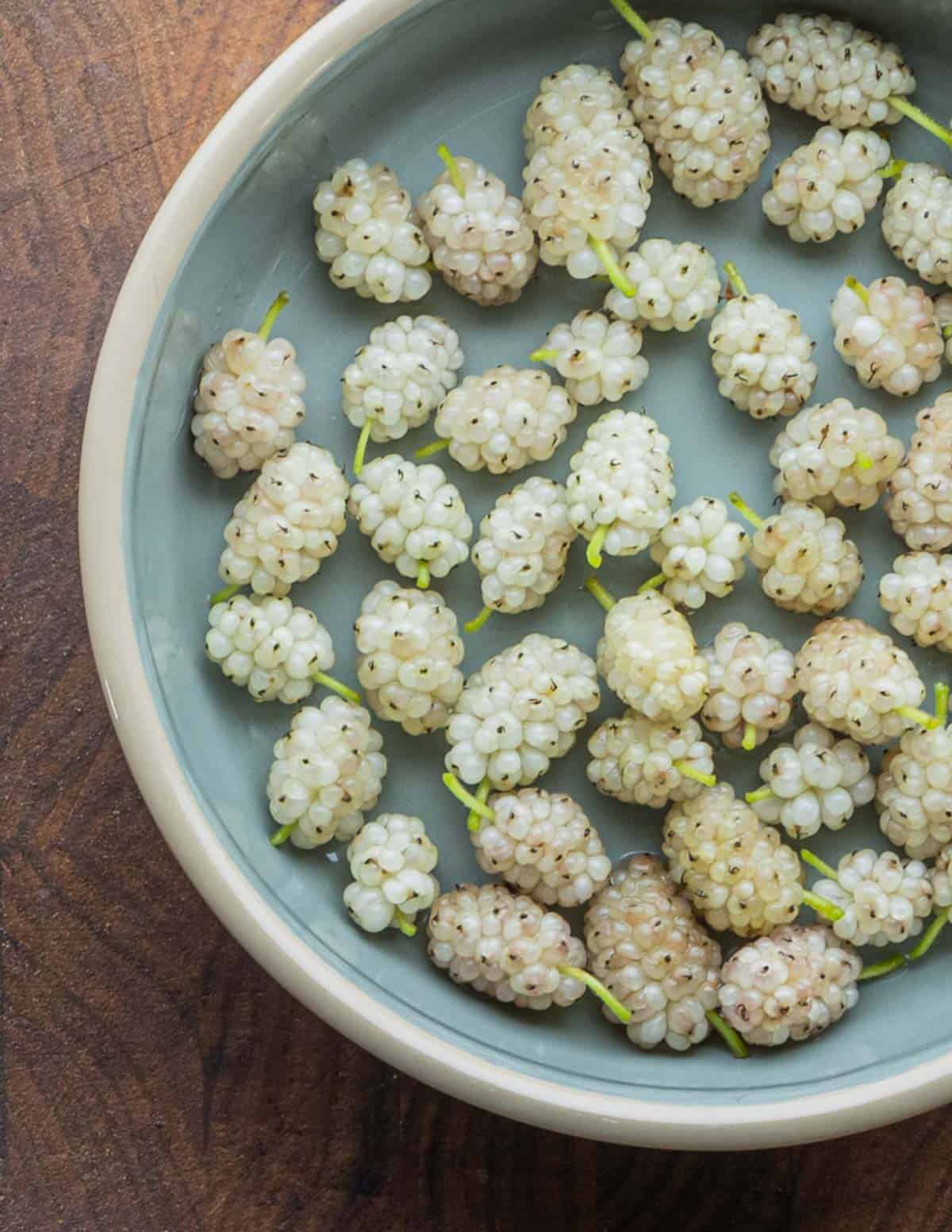
How to Make it
The recipe is very simple. Take a bunch of fresh white mulberries and put them in a jar white white wine vinegar and honey. Label the jar and forget about it for a month or two, then strain the fruit.
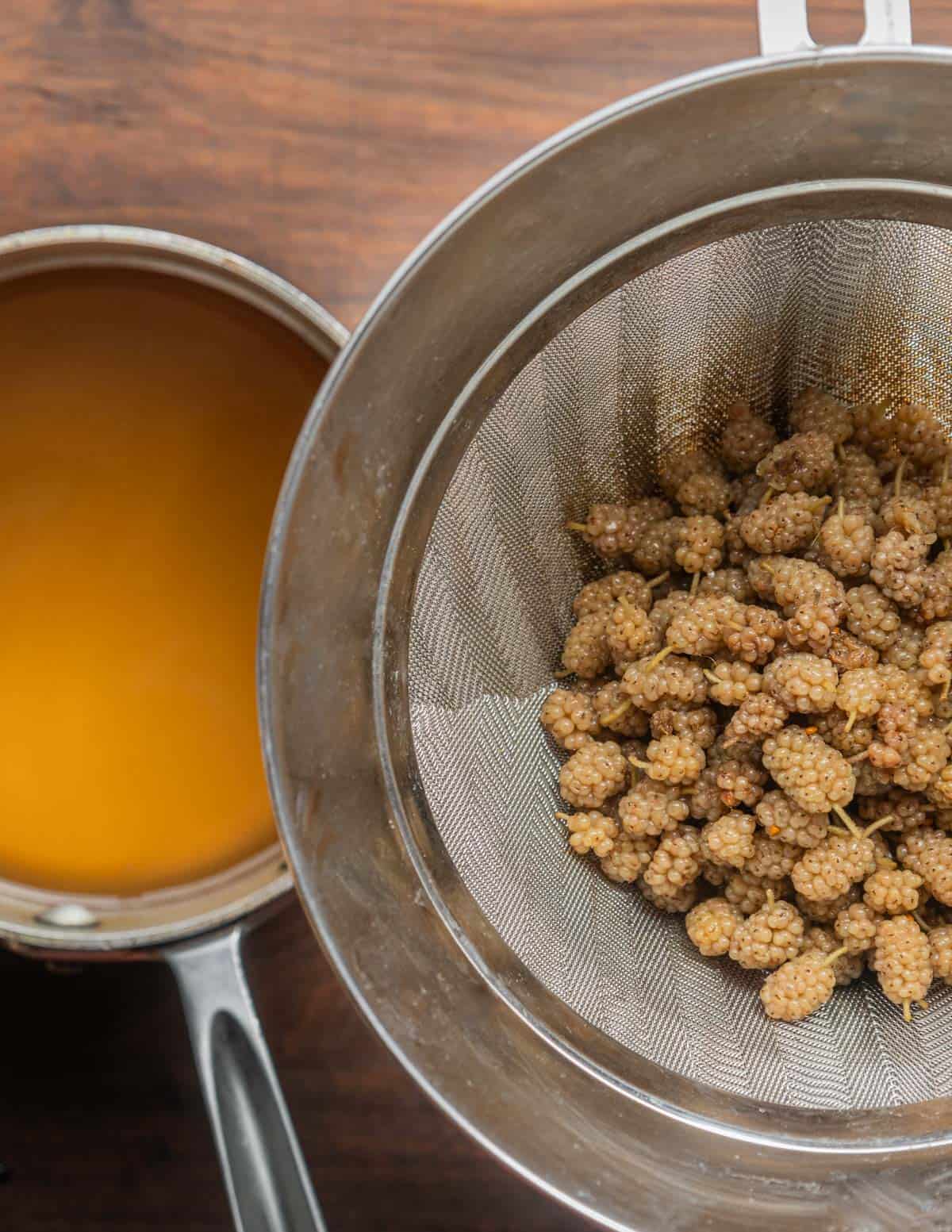
The finished vinegar can be used to make sauces and salad dressings.
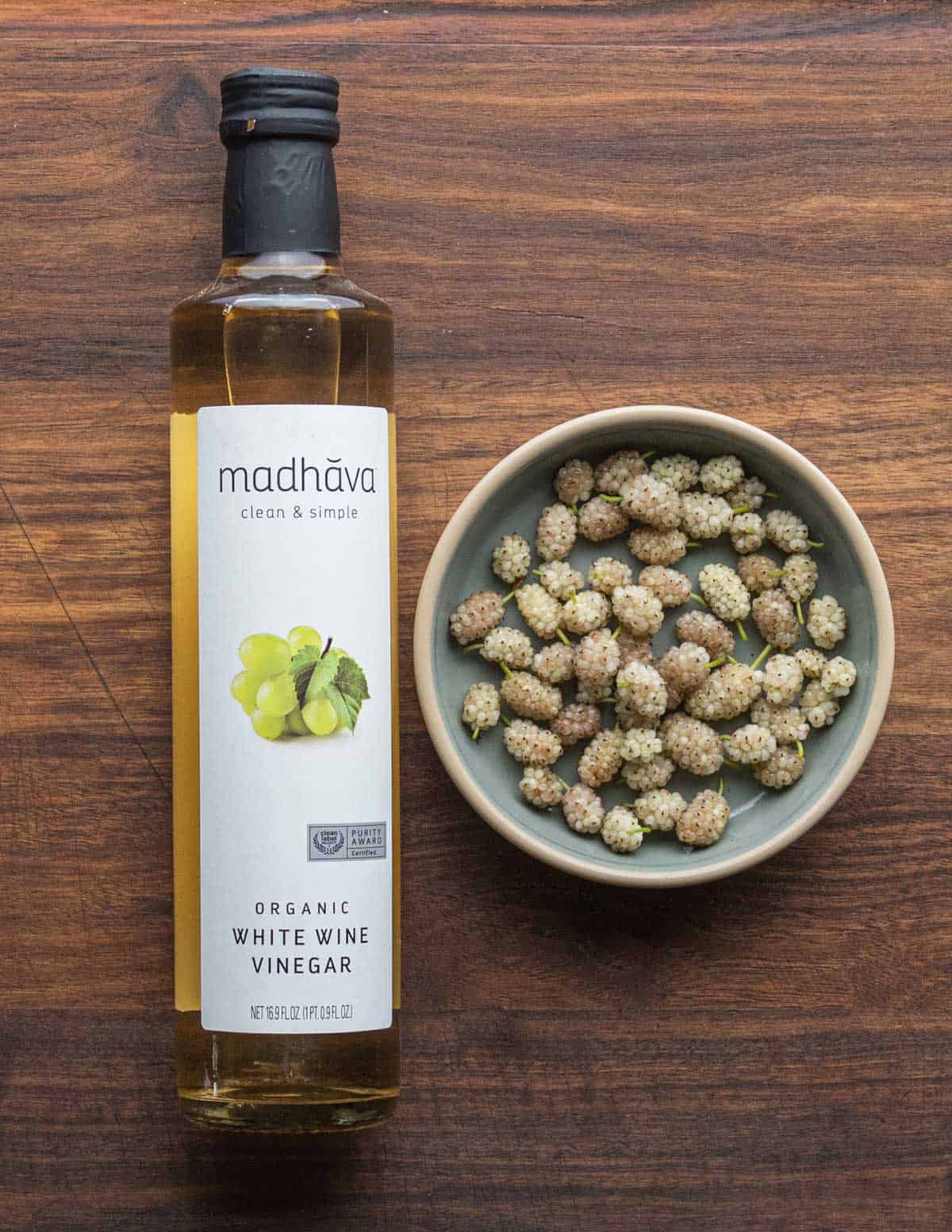
The fruit can be used to make a tart white mulberry jam by itself of mixed with other fruit.
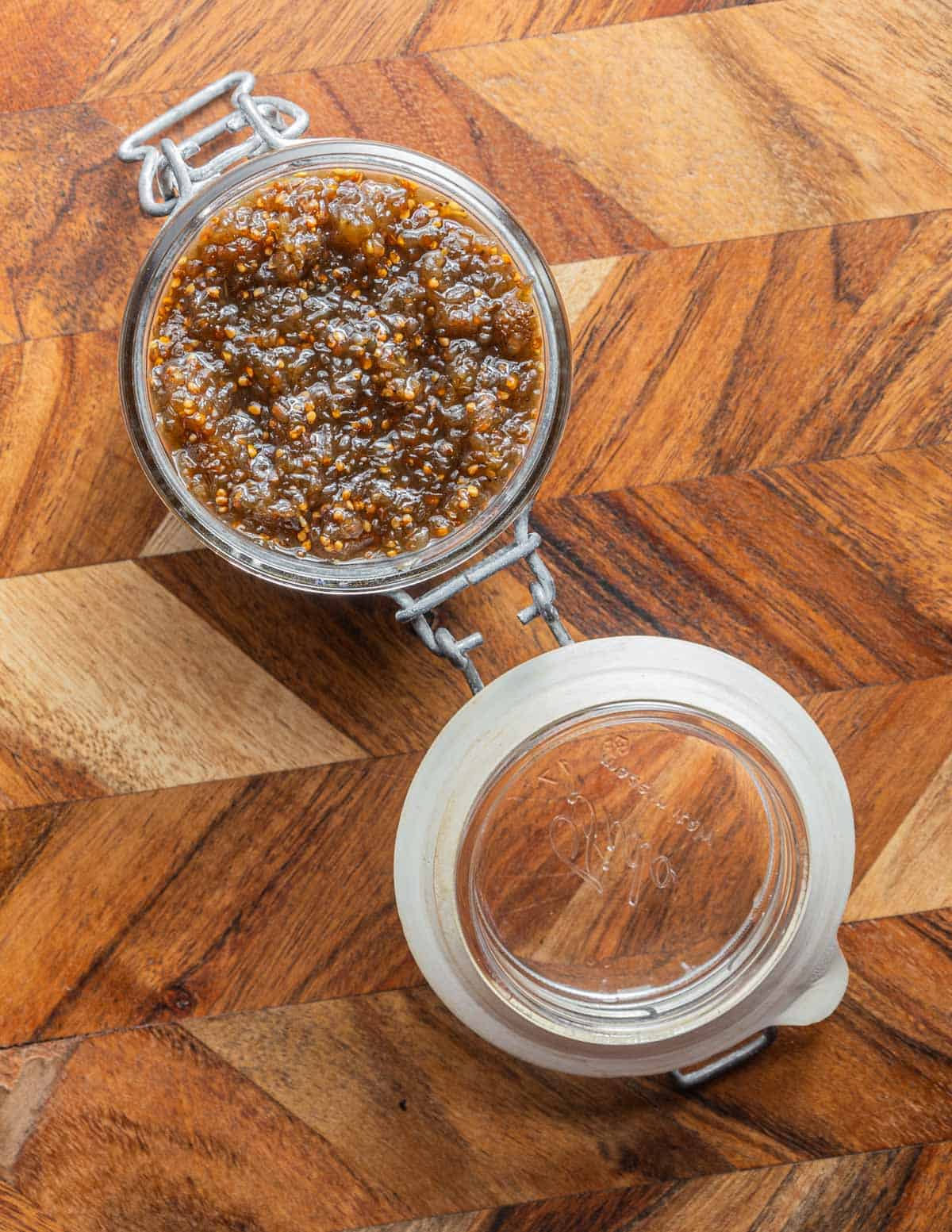
If you want to make a from-scratch fermented mulberry vinegar instead it's easy! Just follow my recipe for Homemade Fruit Scrap Vinegar.
Chef's Notes
- This is a great way to use dirty mulberries that you've shaken from a tree.
- You can do the same thing with black mulberries or white mulberries that have dark fruit. If you want to do that, use a dark vinegar like balsamic vinegar.
- Honey is good, but maple syrup can be substituted for a slightly different flavor. As it changes the color, I prefer it with darker black mulberries.
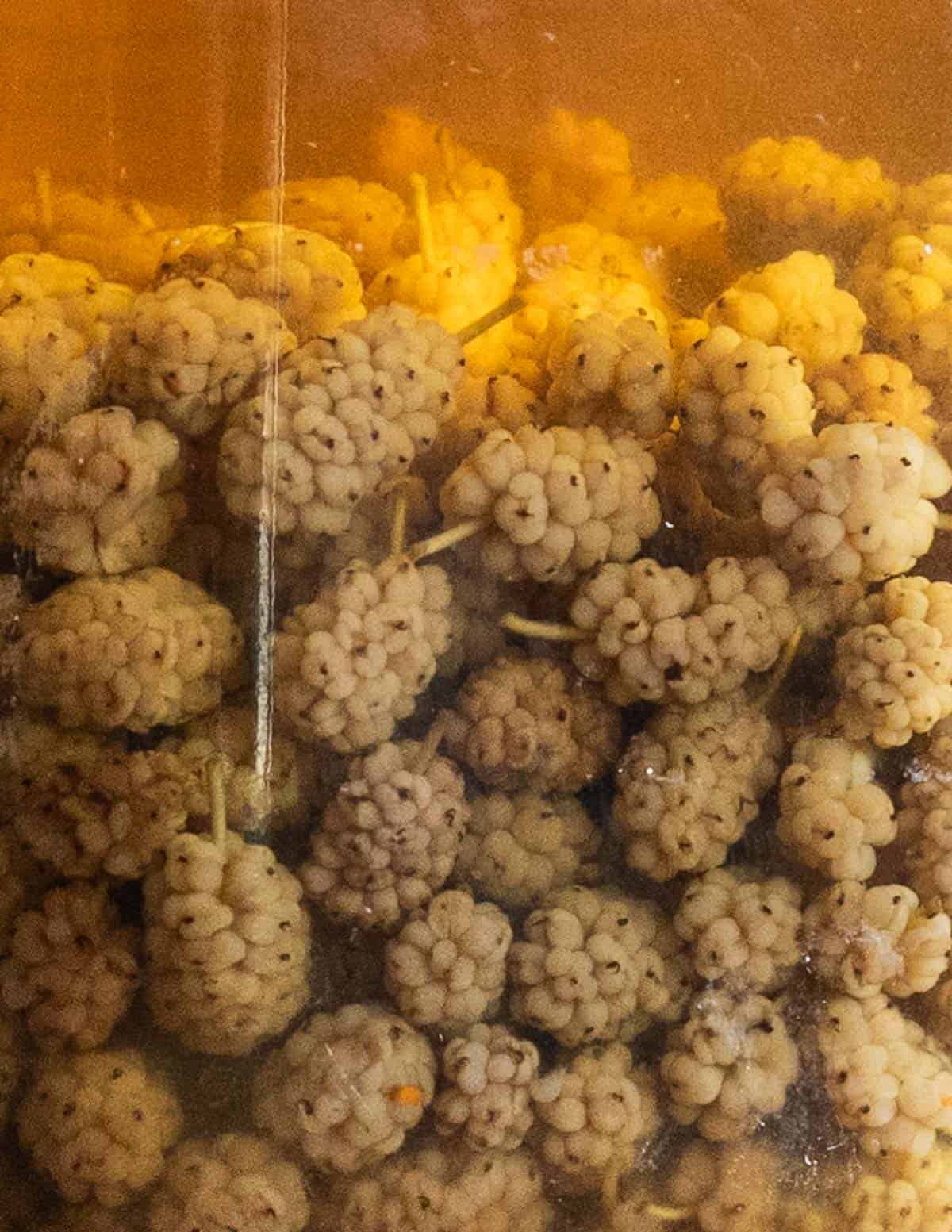
Related Posts
White Mulberry Vinegar
Equipment
- 1 Strainer
- 1 8 cup mason jar or similar
Ingredients
- 20 oz White wine vinegar
- 14 oz Mild honey
- ½ teaspoon Kosher salt
- 1 large Sprig of fresh tarragon optional
- 12 oz (~2.5 cups) Fresh mulberries you can use slightly dirty fruit here as it will be strained, just don't use it for jam after.
Instructions
- The measurements here are approximate, in a pinch you can just fill a jar ¾ of the way full with fruit and cover them with the vinegar.
- Combine all ingredients and store in a jar.
- Allow the fruit and vinegar to macerate for 30 days.
- Strain the fruit and bottle the vinegar. Label and date the bottle.
- The fruit can be mixed with other fruit to make jams and other preserves.


ilona
This looks delicious....the ingredients list doesn't mention a quantity of mulberries...could you give a ballpark? Thanks.
Alan Bergo
Thanks for catching that. It's 12 oz. I adjusted it.
L.L
We have so many mulberry trees in our neighborhood! So I'm looking for recipes.
But I'm unclear, what can I do with the vinegar/ preserved fruit afterwards? Thanks!
Alan Bergo
The fruit can be cooked into jam mixed with other fresh mulberries, I'd use about half of the weight of my mulberry jam. Use the sweetened vinegar to season salads, dash the greens with some of the vinegar and some good salad oil (using separate bottles) add some fresh herbs torn up like basil or mint, toss, season with salt and pepper-easy.
Felix K-C
oh!! every other site I find for mulberries only deals with black or red ones, and so I never quite know what to do with the mounds of white mulberries my tree produces every year! I always want to try something, but the taste is so mild and a little watery that nothing ever turns out the way I want. I'm excited to try this once my tree fruits this year.
Forgive the silly question, but when the jar is macerating, does it need to be refrigerated, or room temp?
Alan Bergo
Room temp is fine, this is shelf stable.